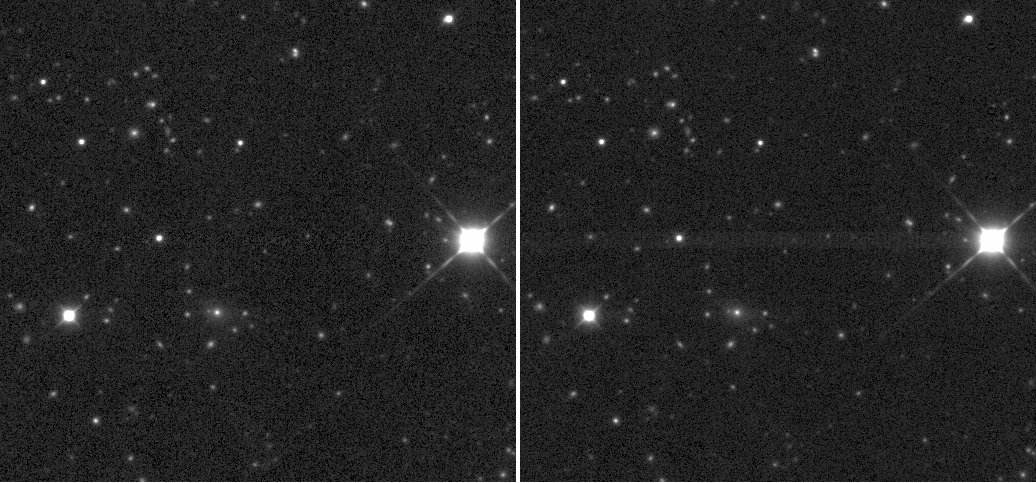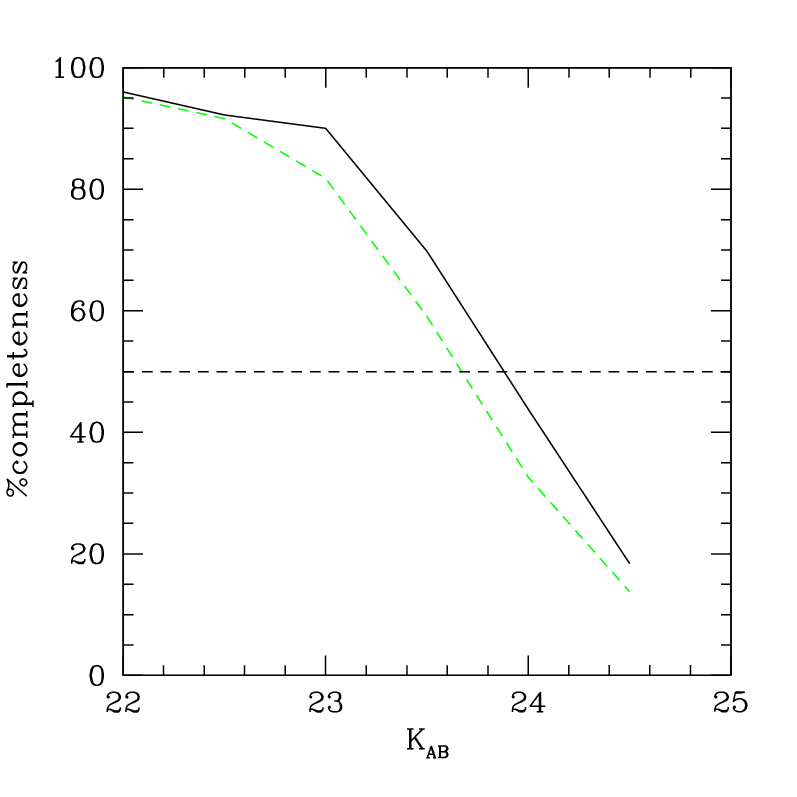by
CMA
,
HJMCC
- Updated July 18th, 2007
CFHT decided to store WIRCam FITS images as data cubes to reduce the number of files in their archive. Consequently, all images in a cube share the same header. In general TERAPIX software tools do not accept data formatted in image cubes. After some tests, in particular concerning the computation of the astrometric solution and the stack production, it became clear that there was no advantage for TERAPIX in keeping the pixels in data-cubes. In fact, there is no three-dimensional information in CFHT data-cubes. Every slice of a cube is actually an image with changing seeing, sky features, photometric quality and zero-points: quality assessment has to be performed before any slice medianing or combining. In addition, in the case of micro-dithered exposures, the PSF is affected by pixel-to-pixel combinations, more or less depending on image seeing: the TERAPIX software tools can perform astrometry precisely enough to resample and stack images with half a pixel of displacement. A C program has been developed to split the cubes, using Emmanuel Bertin FITS-LDAC library. MissFITS works with MEF or single extension cubes of images: it splits an image cube with NAXIS=3 and NAXIS3=n in n images with NAXIS=2. All processing steps thereafter use these “unpacked” images.
The COSMOS consortium decided to reprocess its data independently of the CFHT-TERAPIX line, collapsing data-cubes in a one single image (averaging on the third axis). The comparison between the two final stacks allows to evaluate the impact of collapsing cubes in data processing. In particular, the impact on the oversampling has also been analysed on two stacks produced with a pixel scale of 0.15 arcsec/pixel.
The qualityFITS output for the four stacks are
1) Processing Time Collapsing data-cubes is an obvious way to reduce processing time. Micro-dithered cubes contain four or more micro-dithered exposures: collapsing them divides at least by four processing time.
2) Background quality
The COSMOS stack has a zero-point of 31.4 in AB system, the TERAPIX one of 30 in Vega system. The noise estimated by SExtractor over the COSMOS stack had to be multiplied by 1.6 to be comparable to the TERAPIX one. Even if the background in the TERAPIX stack is more affected by small scale defects, the global dispersion measured by SExtractor on the COSMOS background stack is 13% larger than the TERAPIX one.
 cosmos versus terapix cosmos versus terapix |
The image compares the same region of the field in the COSMOS (left) stack and in the TERAPIX (right) one.
3) PSF quality
When images shifted by half a pixel are combined the quality of the PSF can be affected, more or less depending on the seeing quality. We analysed the PSF of the two stacks using PSFEx.
PSFEx results show that in this particularly regime of seeing, no effects on the PSF are visible.
4) Completeness
 Completeness in COSMOS stack Completeness in COSMOS stack | | In the figure the completeness of the two stacks is compared: in black the TERAPIX stack, in green the COSMOS one. Background residuals and noise and higher threshold for masking are better candidates than collapsing cubes to explain differences in the completeness level of the final catalogs. Collapsing cubes can play a role if median algorithms are applied, but more investigations are needed in this direction. |
In conclusion, actual TERAPIX pipeline gives satisfactory results and no reasons to modify it in the direction of collapsing cubes arise in our analysis. Development efforts will be put in code optimisation and background subtraction improvements.


